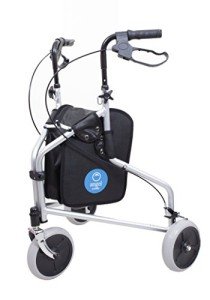This company has no active jobs
0 Review
Rate This Company ( No reviews yet )
About Us
The Main Issue With Mobility Aid, And How You Can Fix It

Understanding Mobility Aids: Enhancing Independence and Quality of Life
Mobility aids are essential tools that assist individuals with physical impairments or conditions that prevent their ability to move freely. These aids not just promote self-reliance and enhance quality of life however likewise supply safety and support for users in different environments. The landscape of mobility aids is broad, incorporating a variety of devices tailored to meet individual requirements. This article aims to check out the various kinds of mobility aids, their benefits, factors to consider for use, and frequently asked concerns.
Types of Mobility Aids
Mobility aids can be classified into a number of significant types, each created to help in particular methods. Below is a table summarizing the most common mobility aids:
| Type of Mobility Aid | Description | Perfect Use Case |
|---|---|---|
| Wheelchairs | A chair installed on wheels utilized by those not able to stroll. | Long-lasting impairment or extreme mobility problems. |
| Walkers | A frame that provides support for individuals while walking. | Post-surgery recovery or balance problems. |
| Walking canes | A stick used for balance and assistance while walking. | Moderate mobility problems or as a preventive measure. |
| Rollators | A walker equipped with wheels and typically a seat. | Individuals needing assistance over longer ranges. |
| Crutches | Gadget used to raise and support the body weight of an individual with a leg injury. | Temporary injuries requiring non-weight bearing. |
| Scooters | A motorized device for those who can sit but not walk cross countries. | Long trips and fatigue-prone people. |
| Lift Chairs | Reclining chairs that raise to assist users in standing. | Elderly individuals or those with severe discomfort. |
Benefits of Mobility Aids
The use of mobility aids extends beyond simple transportation; they serve numerous critical functions in boosting the well-being of users:
- Independence: Mobility aids empower users to perform daily activities without relying heavily on caretakers or help from others.
- Safety: Many mobility aids are designed to reduce the risk of falls, supplying users with stability when moving around.
- Enhanced Quality of Life: By enhancing mobility, people can take part in social activities, workout, and maintain community connections, positively impacting their psychological health.
- Access to Environments: Mobility aids can help with access to locations that may otherwise be challenging to navigate, such as public transport and public areas.
- Assistance Recovery: They play a vital function in rehabilitation following surgery or injury by promoting progressive mobility and helping recovery.
Factors to consider for Choosing the Right Mobility Aid
Selecting the proper mobility aid can significantly affect a person’s lifestyle. Here are a number of key considerations to remember:
- Level of Mobility Impairment: Assess the intensity of mobility problems to figure out the most ideal type of aid.
- User’s Physical Condition: Consider elements like weight, strength, and total health.
- User’s Lifestyle and Environment: Analyze where the mobility aid will be utilized most frequently: inside, outdoors, or both.
- Practical Needs: Evaluate if additional features such as storage, seating, or height modifications are required.
- Assessment with Professionals: Always seek recommendations from healthcare professionals for guidance tailored to individual scenarios.
Frequently Asked Questions (FAQs)
Q1: What is the distinction between a walker and a rollator?A1: A walker is a simple frameused for assistance and balance, while a rollator has wheels, providing simpler mobility and frequently includes additional functions such as a seat and storage. Q2: Can mobility aids be covered by insurance?A2:
Many health insurance plans, including Medicare, may cover mobility aids if they are deemed clinically essential. It is suggested to speak with your insurance company for specific details. Q3: How do I understand when it’s time to use a mobility aid?A3: If you’ve experienced regular falls, consistent discomfort
while walking, or have difficulty finishing daily activities
, it may be time to consider a mobility aid. Speak with a healthcare professional for customized recommendations. Q4: Are there mobility aids created for outdoor use?A4: Yes, numerous mobility aids are specifically developed for Outdoor Walker environments, consisting of scooters, outdoor walkers, and all-terrain wheelchairs, equipped to manage numerous terrains. Q5: Can I use a mobility aid after surgery, like knee replacement?A5: Yes, mobility aids such as walkers and crutches are typically advised post-surgery to aid healing and maintain safety as you restore
strength. Mobility aids play a vital function in supporting people with mobilityobstacles, facilitating independence, and enhancing general quality of life. With a varied variety of options readily available, it’s important for users to assess their distinct requirements and seek advice from professionals to choose the most appropriate aid. As innovation and design continue to progress, these aids will unquestionably end up being a lot more user-friendly and effective, promoting a more inclusive world for everybody. By understanding the different types of mobility aids and their respective benefits, people can make informed options that enhance their mobility and assist in a more active and satisfying lifestyle.
